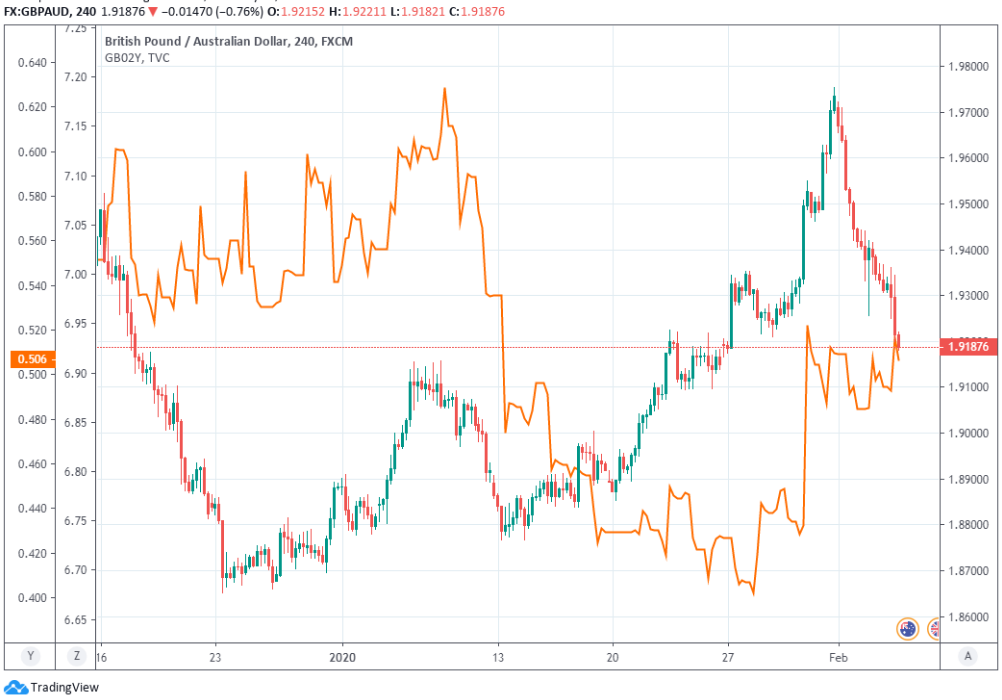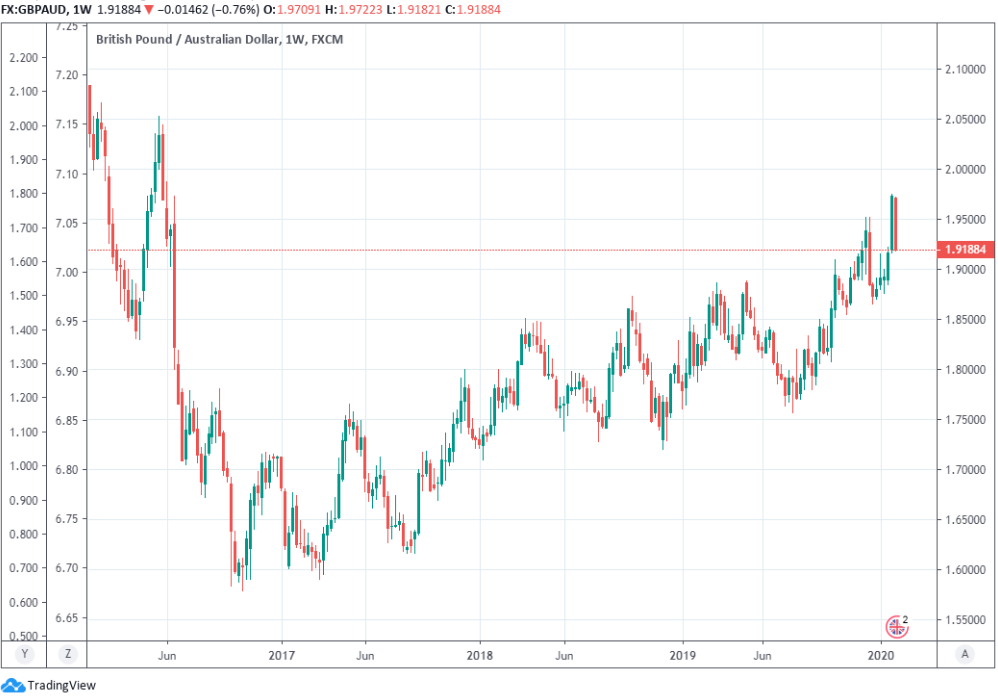Pound a Sell Against Resurgent Australian Dollar says Leading Strategist
- Written by: James Skinner
-
- GBP tipped as sell at TD Securities amid AUD rebound.
- AUD can extend recovery following RBA policy shift.
- GBP looking mispriced given Brexit and economic risks.

Image © Newtown Grafitti, Reproduced under CC Licensing.
- GBP/AUD Spot Rate: 1.9215, -0.17%
- Indicative bank rates for transfers: 1.8533-1.8667
- Indicative broker rates for transfers: 1.8917-1.9032 >> find out more about this rate.
The Pound is tipped to suffer further declines against the Australian Dollar according to strategists at TD Securities who say the market is underpricing the risks facing the Pound while the Australian Dollar has the potential to recover further.
The GBP/AUD exchange rate has come under pressure of late and is could on Thursday endure its fourth successive day of declines as Sterling continues to retreat from the peak set at 1.9753 set last week, thanks in a large part to the Australian Dollar's strong resurgence on fading market fears over the impact of the coronavirus outbreak in China. To be more specific, while confirmed cases of the virus continue to climb the market is judging that a turning point in the outbreak has been reached, as we explore in more detail here.
Australia's Dollar has however been aided by Reserve Bank of Australia (RBA) Governor Philip Lowe who told the Sydney Press Club midweek that progress is being made toward "full employment" in the economy as well as the inflation target, before hinting that a sustained deterioration is necessary on both fronts before the RBA entertains a fourth cut to its cash rate.
Above: Pound-to-Australian Dollar rate at 4-hour intervals. Falling despite resilience of increased 2-year GB bond yield.
"He repeated the RBA's upbeat growth outlook as he downplayed the ultimate economic impact of the bushfires and viral outbreak on the domestic economy," says Ned Rumpeltin, European head of FX strategy at TD Securities. "We think the AUD should stay relatively firm, although we prefer to express this view on certain key crosses than against the USD."
The RBA had been expected to cut its cash rate twice more in 2020, taking it down to the 0.25% 'lower bound' that would force the bank to resort to quantitative easing in the event that Australia's economy is buffeted by further shocks over the coming years. However, a strong December jobs report coupled with earlier signs of what the RBA characterises as a "gradual turn" in the economy have prompted a rethink in financial markets.
The Australian Dollar outperformed all its main peers on Tuesday, February 04 following the RBA's decision to keep interest rates unchanged at 0.75%, citing an improving domestic economy while seeing no obvious immediate threat coming from the coronavirus. "The central scenario is for the Australian economy to grow by around 2¾ per cent this year and 3 per cent next year, which would be a step up from the growth rates over the past two years," said the RBA's Governor Philip Lowe when delivering the decision.
Above: Pound-to-Australian Dollar rate at daily intervals. Falling as Aussie 2-year bond yield recovers from near historic lows.
"We see the most attractive risk/reward opportunities here on certain crosses, however. In line with this, we maintain our tactical GBP/AUD short this week. At the same time, we believe AUD/NZD is nearing the completion of a trough — especially after NZ's tepid employment data overnight," Rumpeltin says.
Pricing in the overnight-index-swap market now implies an August 04 cash rate of 0.51%, up from 0.42% on Tuesday and 0.36% on October 10, 2019 - the day before the U.S.-China deal was first announced. That shift has lifted the Aussie and helped put a stop to a sharp rally in Sterling that had taken the Pound-to-Australian Dollar rate to new post-referendum highs last week following a Bank of England (BoE) to leave UK rates at 0.75%.
Pound Sterling was lifted by the BoE decision not to cut interest rates but markets have now come close to pricing-out any prospect of a rate cut coming in subsequent months despite the path ahead being littered with Brexit risks. The market-implied Bank Rate for March 26 is now 0.68% while the rate for May 07 was 0.62% on Wednesday, with both being below the current 0.75% rate but substantially above the next level down of 0.50%.
Above: Pound-to-Aussie rate at weekly intervals. Retreating from post-referendum high set after January BoE decision.
"We have pencilled in April as the next most likely timing for a rate cut," Rumpeltin says of the RBA. "We choose to express a more nuanced AUD outlook against currencies where we think the market has mispriced underlying risks. As we note above, Sterling stands out here. GBP/AUD longs look particularly stretched on our HFFV metrics while the technical backdrop has deteriorated substantially. In line with this, we are entering a short GBP/AUD position as our Trade of the Week."
There is plenty that could happen in the global economy that might prompt either the RBA or BoE to cut rates over the coming months but the rub for Pound Sterling is that investors haven't fully priced-in a BoE rate cut until September 2020 when any actual cut would most likely come sooner.
A BoE rate cut could still come if January GDP data disappoints and HM Treasury is not forthcoming with fiscal stimulus in the March 11 budget, which would likely weigh on the Pound. Meanwhile, the market has already taken an August RBA rate cut all the way to the bank, with the implied rate sitting at 0.50% on Wednesday when such a move might never come.
In other words, there's still some room for investors to ditch existing bets on RBA rate cuts, which would be positive for the Aussie, while the market has already baked a large dose of optimism into the price of Sterling. Optimism that might yet prove to be misplaced.












